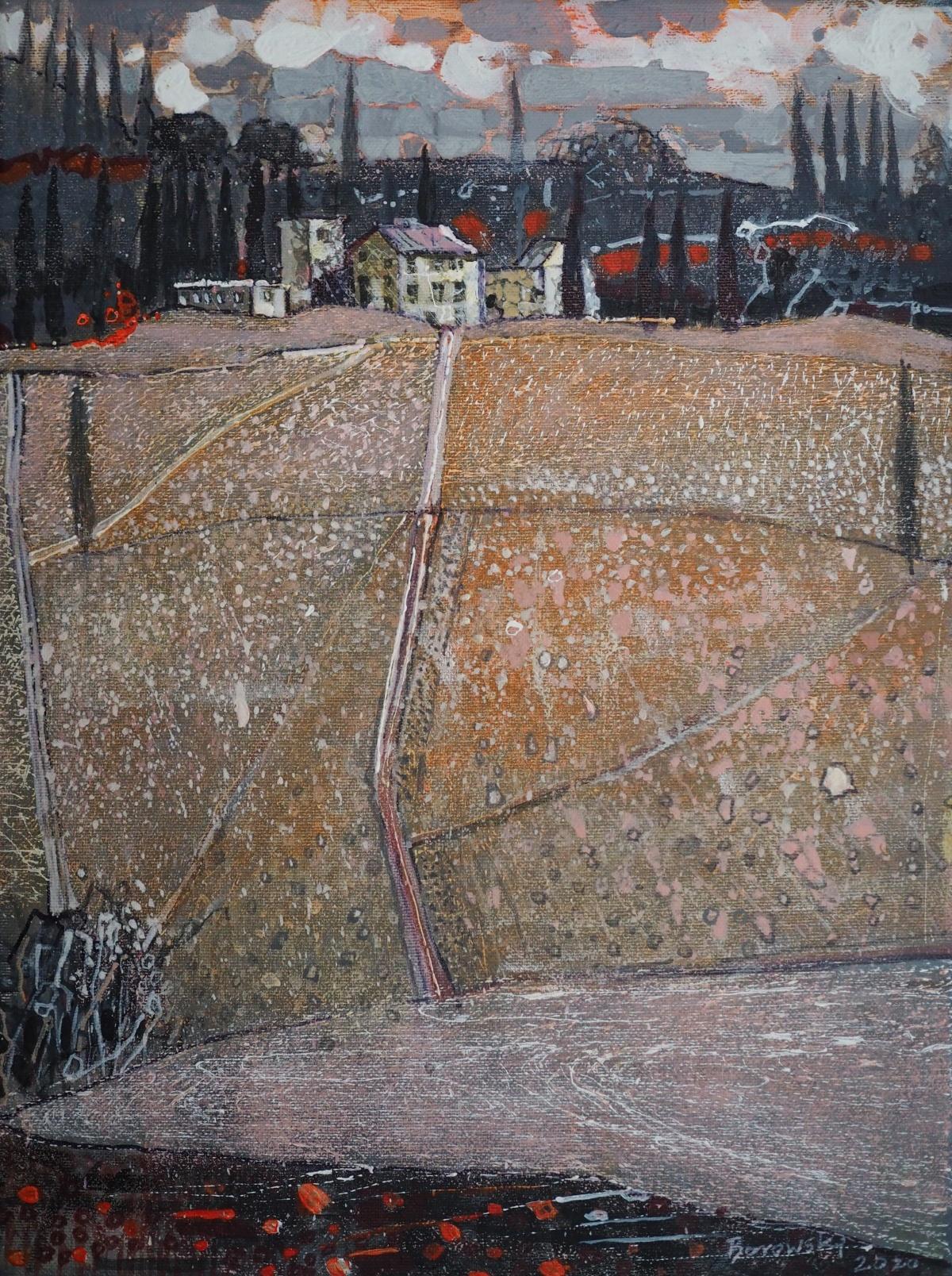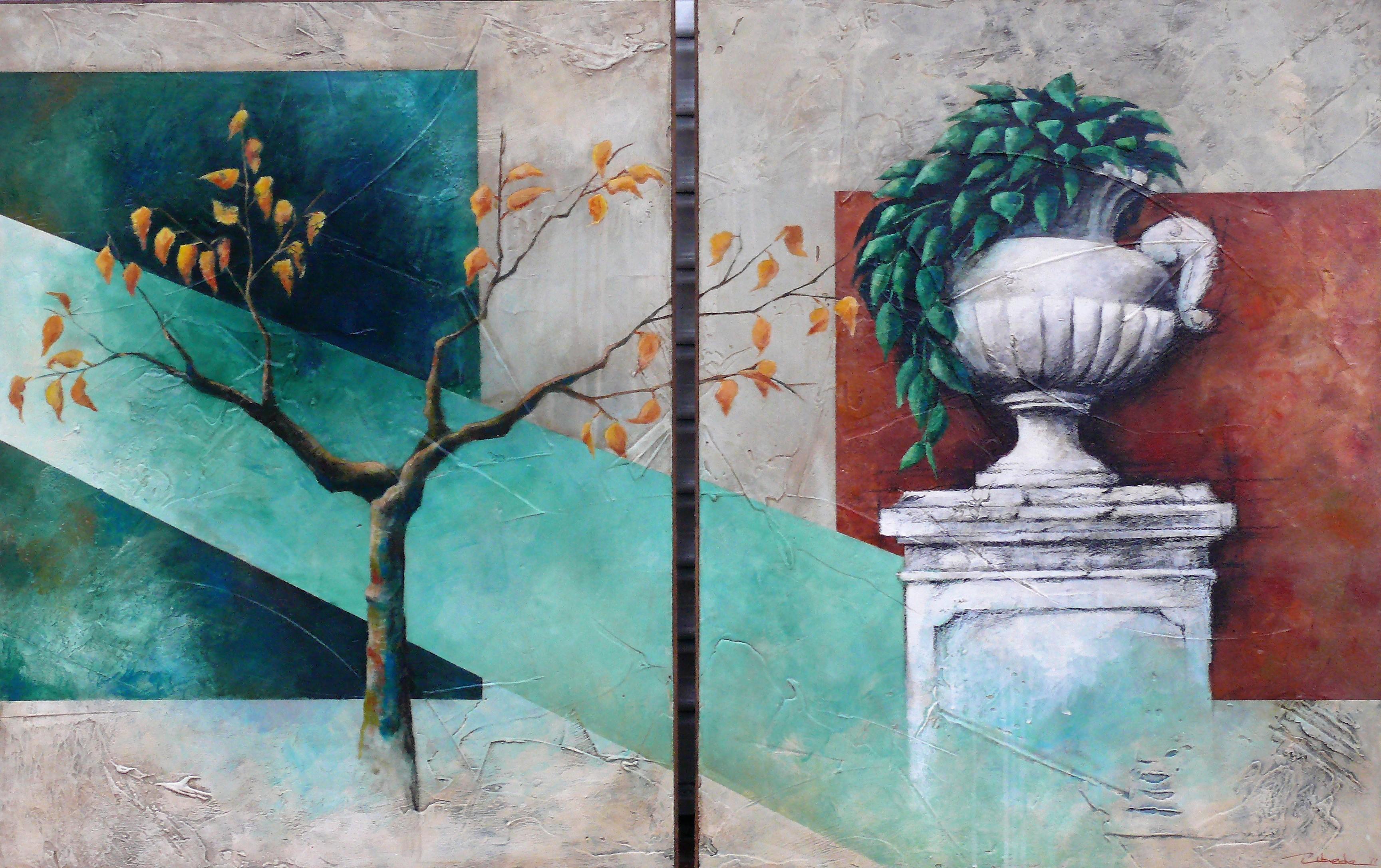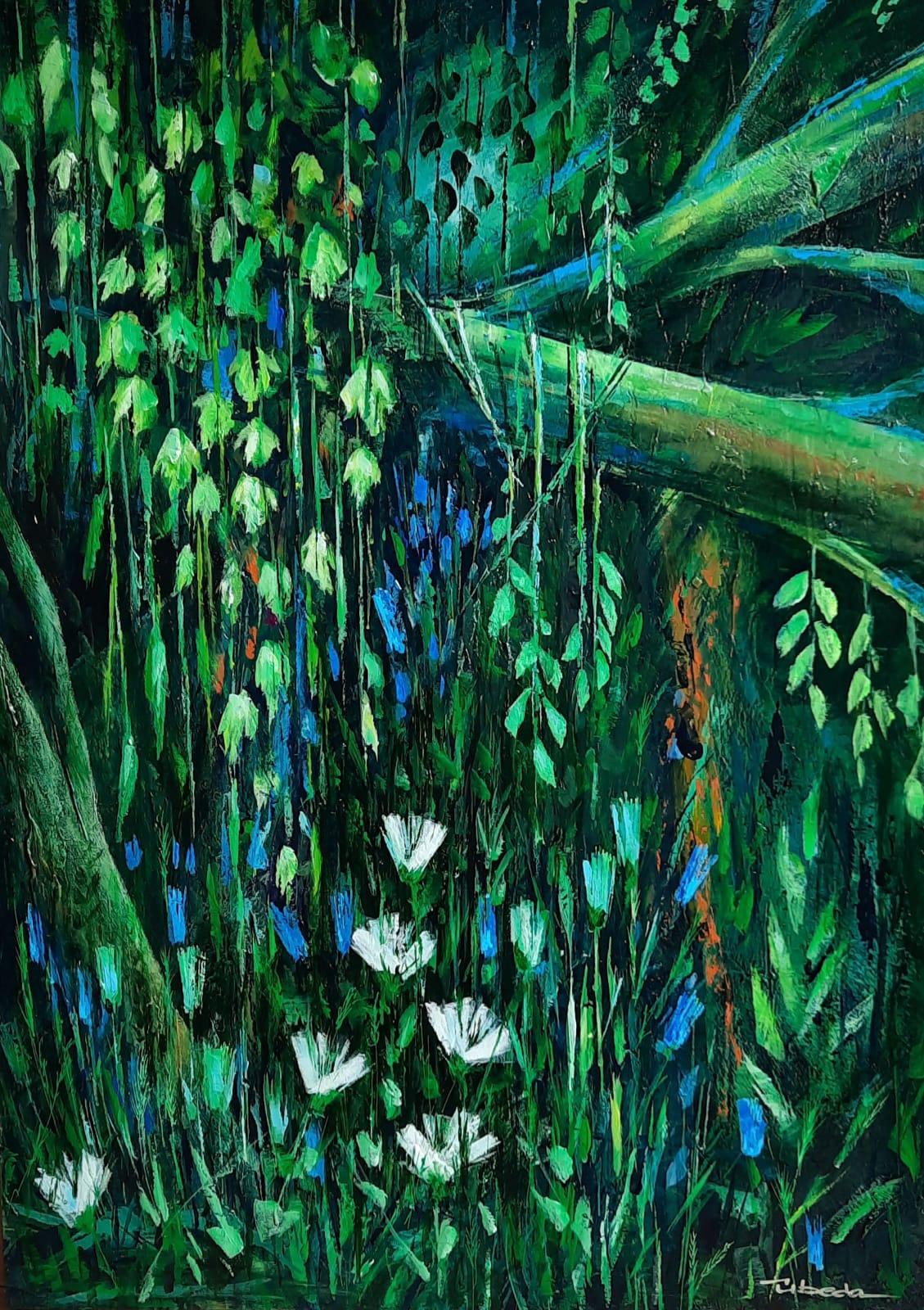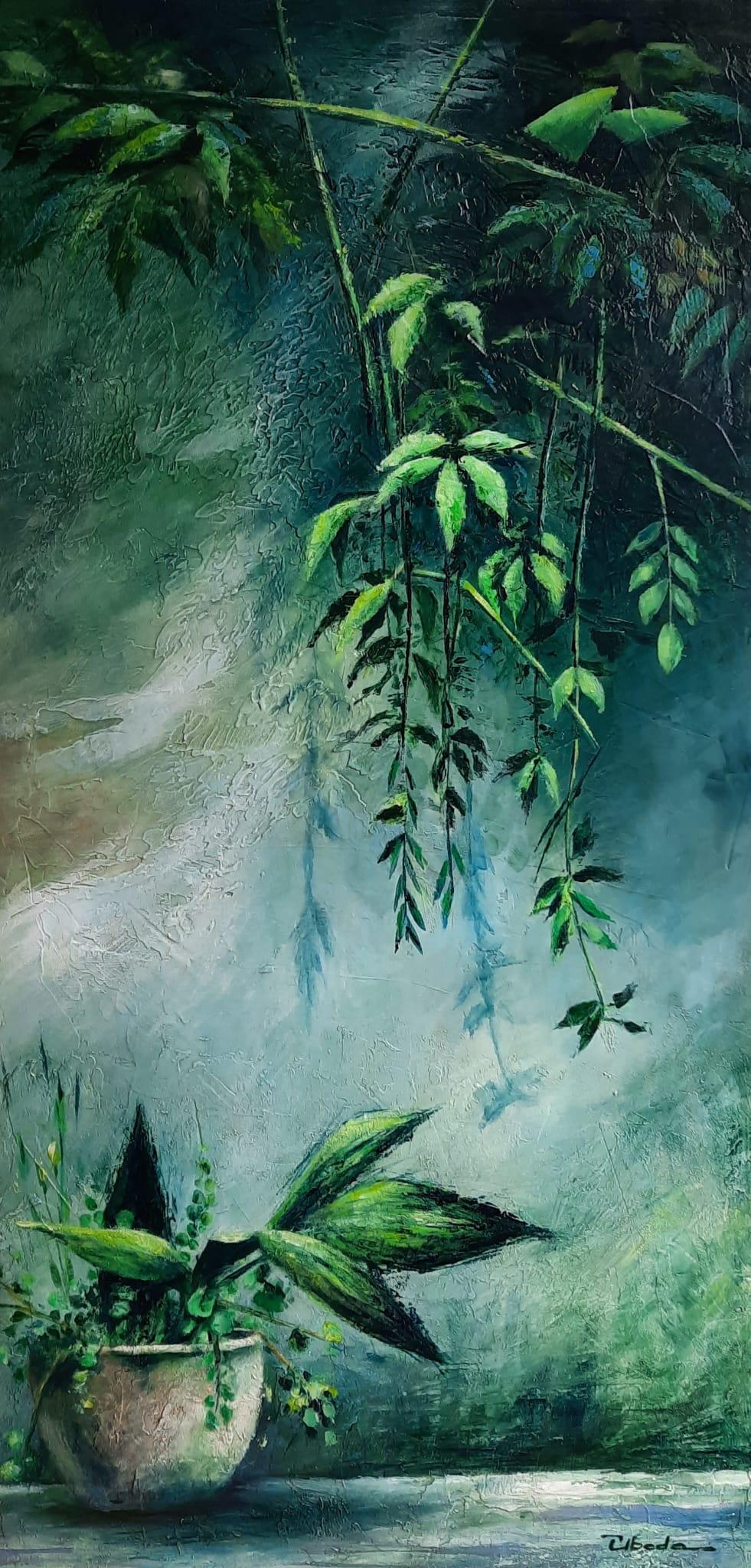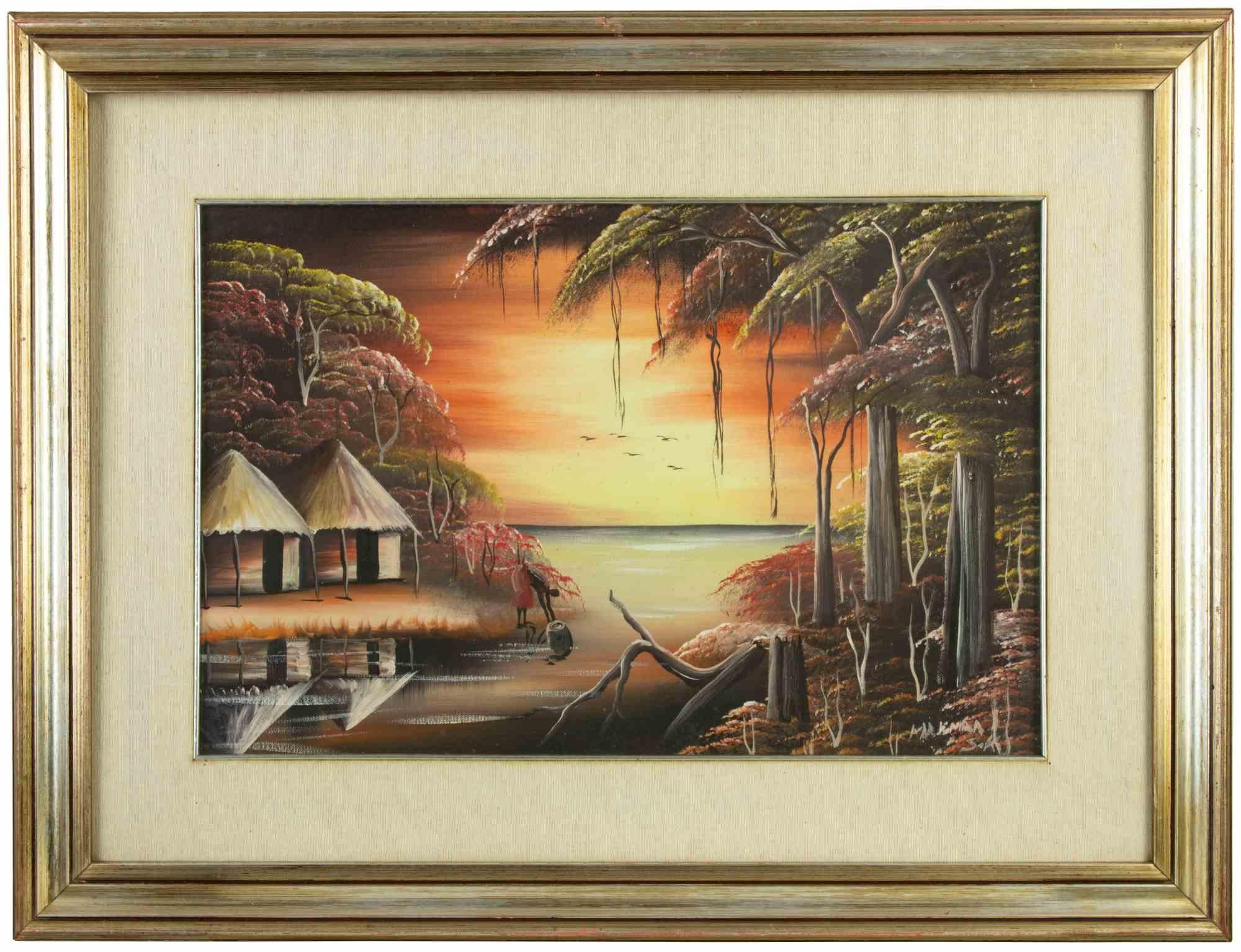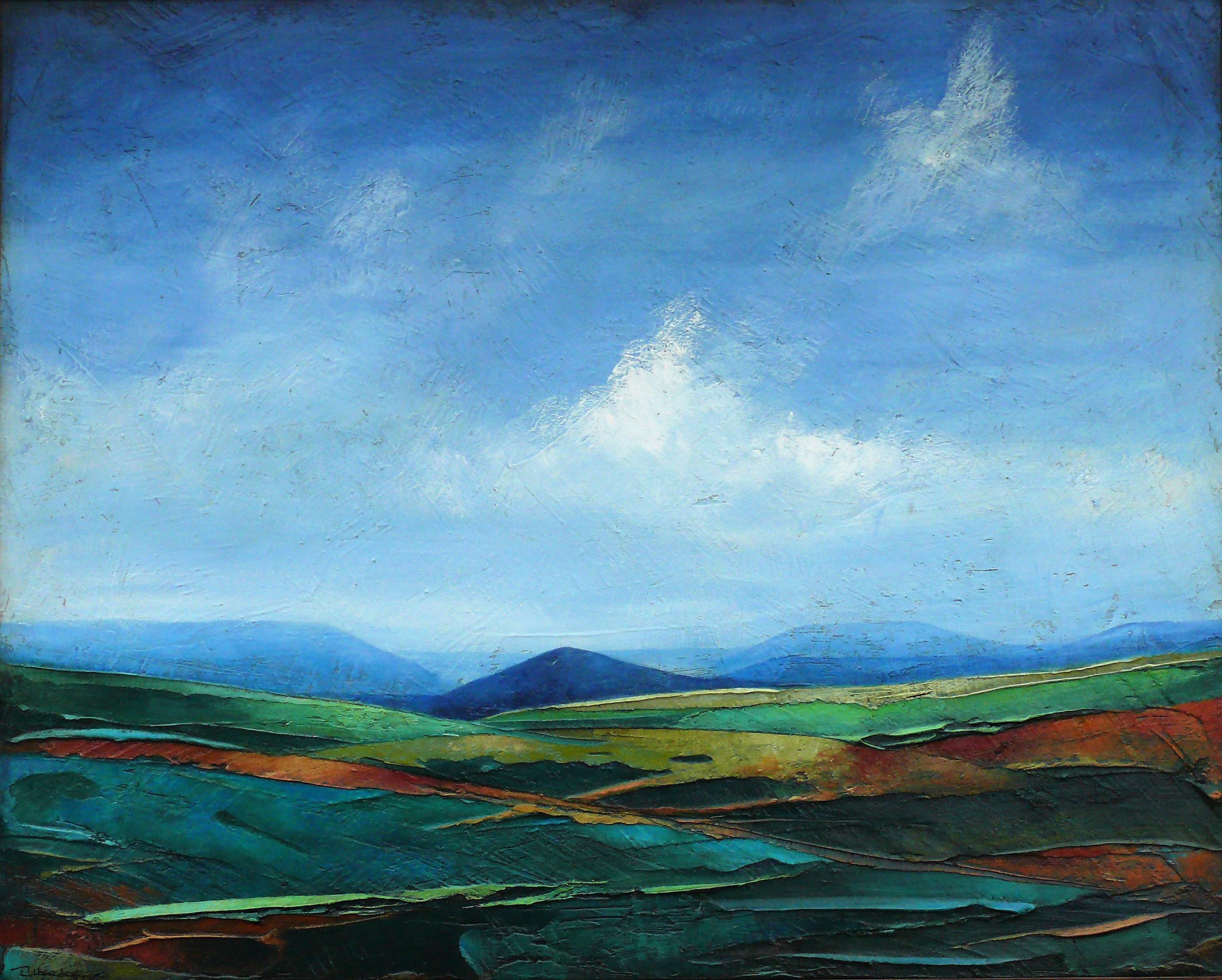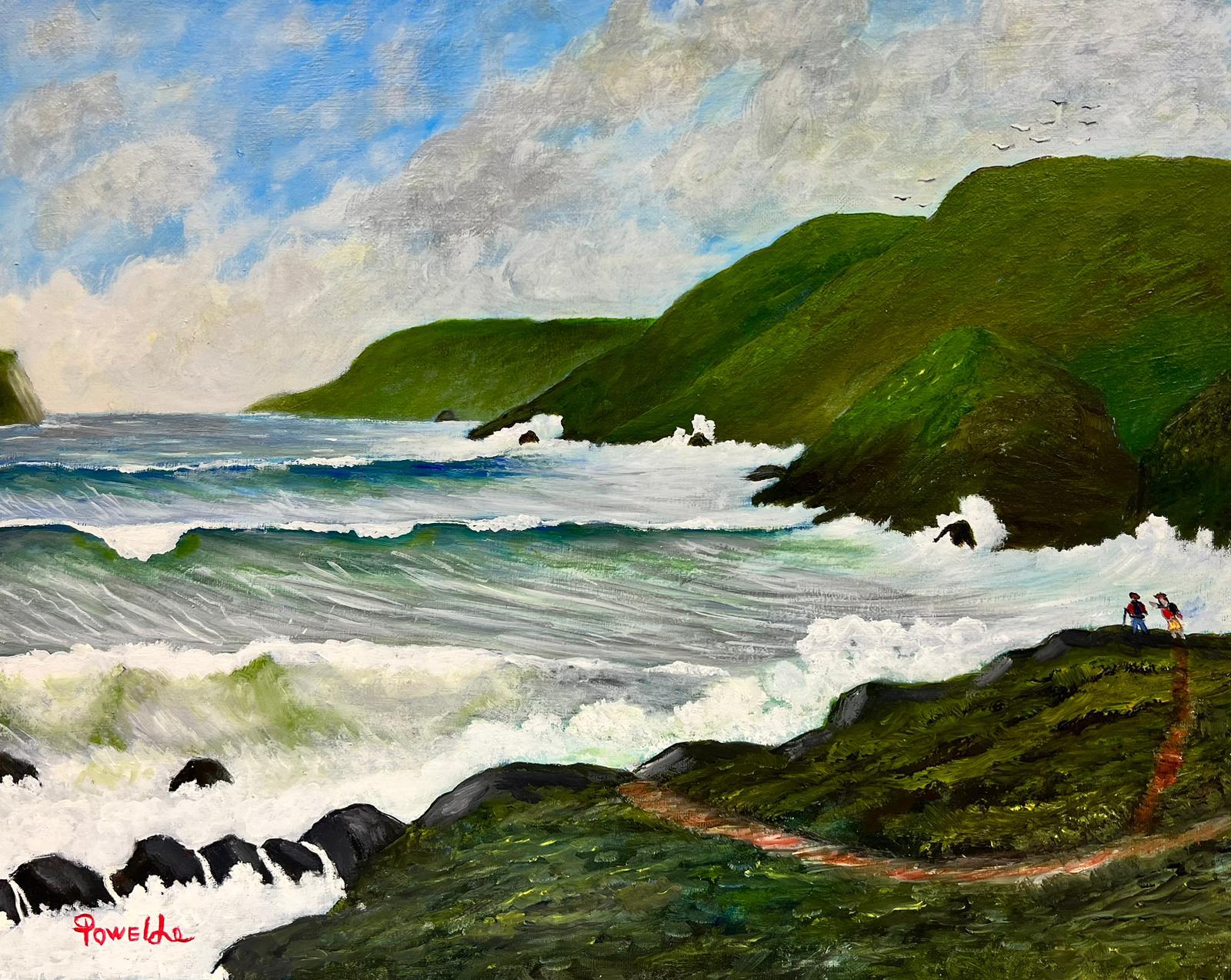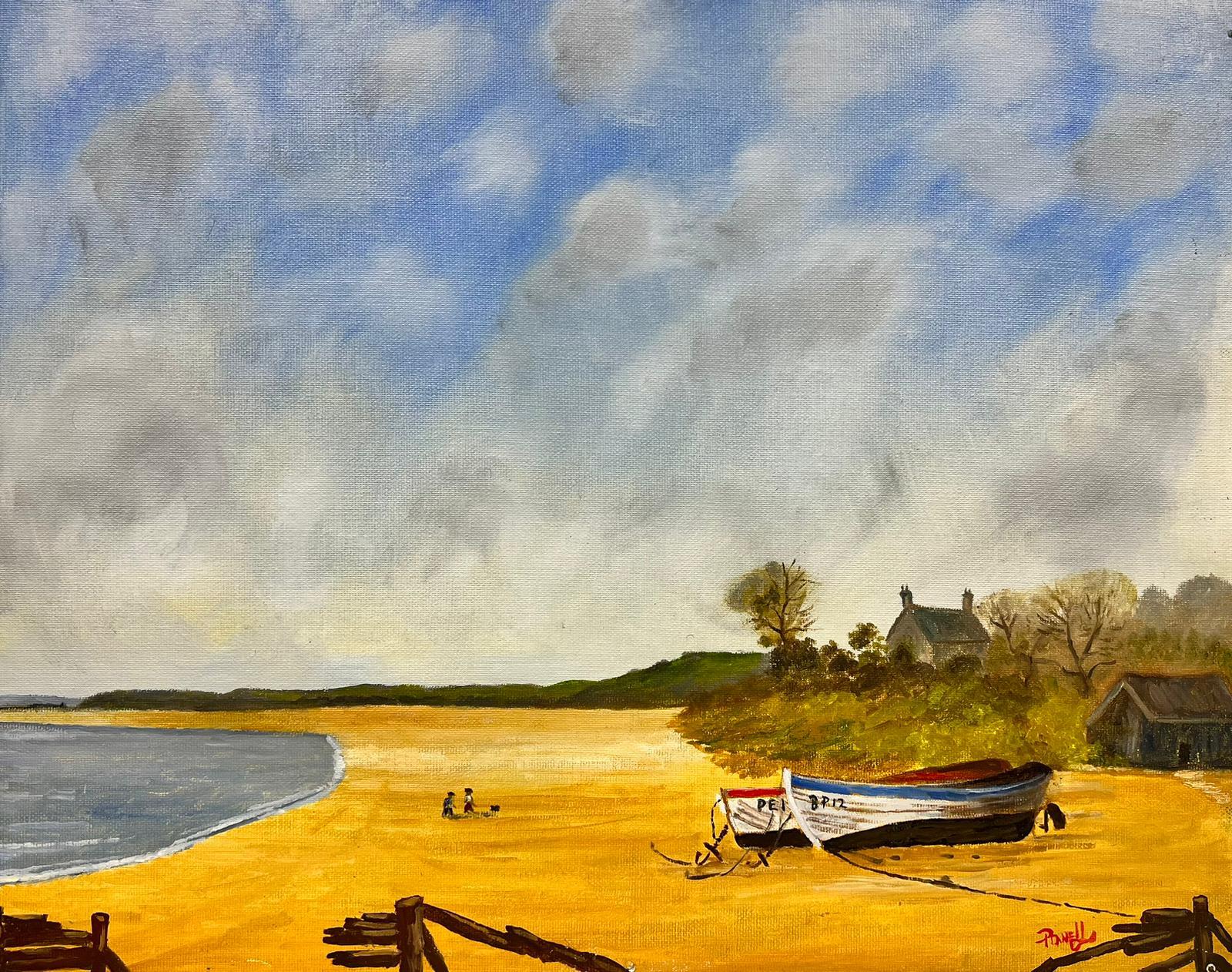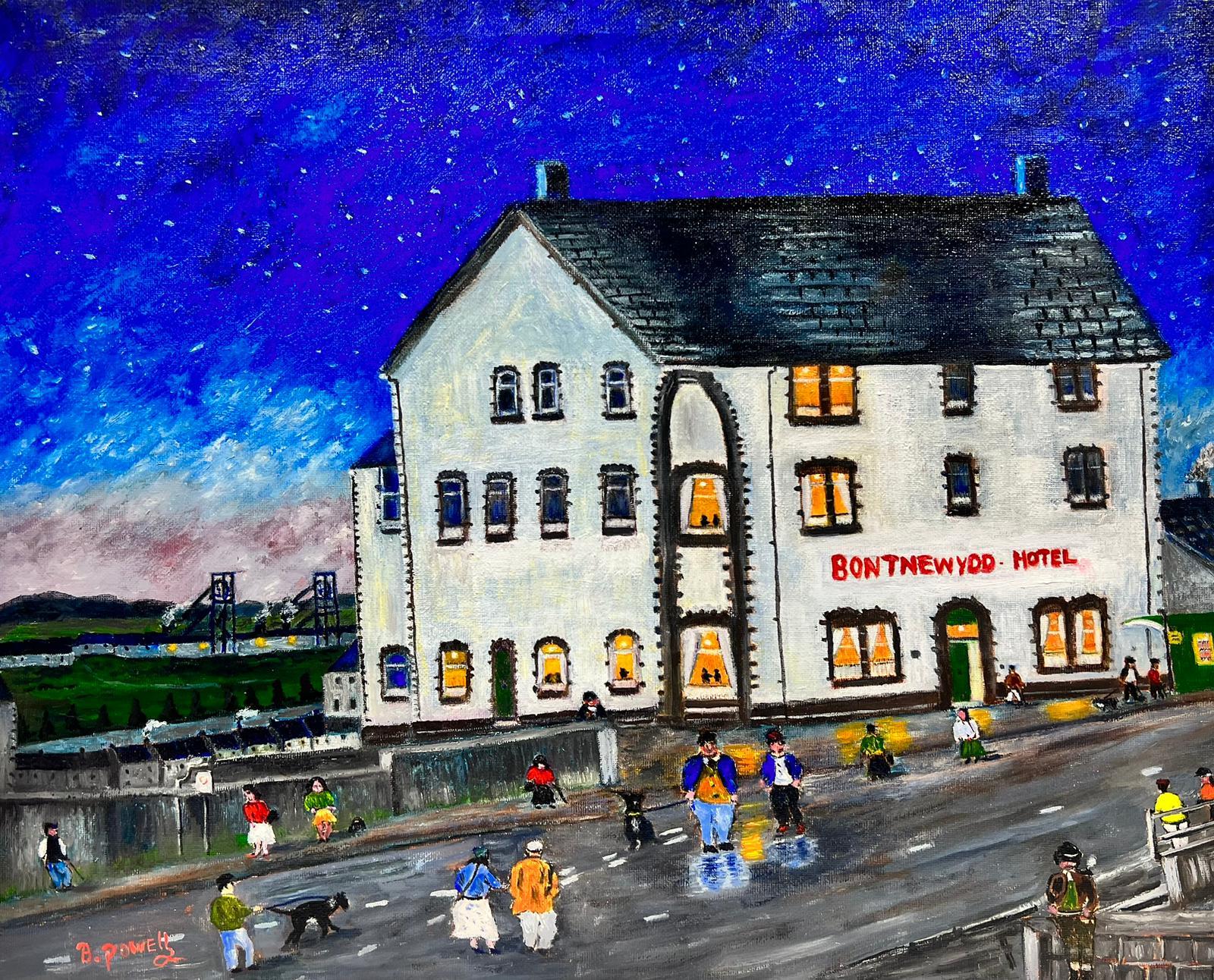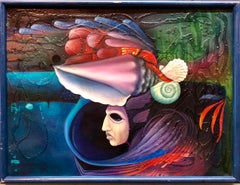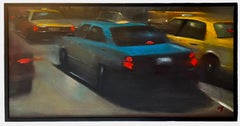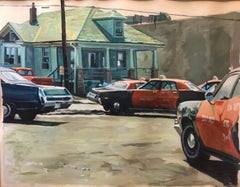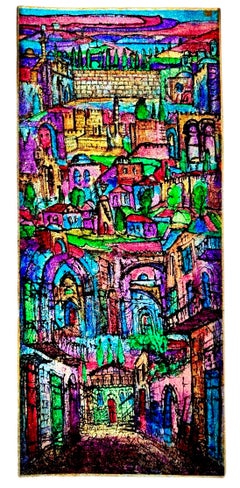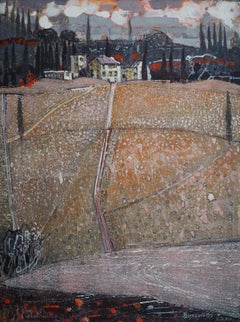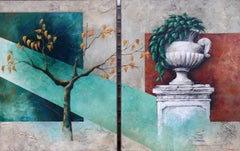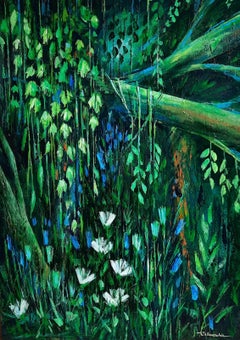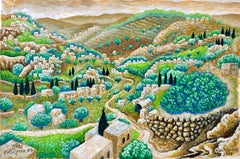
Judaica Acrylic Painting Israeli Art Baruch Nachshon Chevron Jerusalem Hills
View Similar Items
Want more images or videos?
Request additional images or videos from the seller
1 of 11
Baruch NachshonJudaica Acrylic Painting Israeli Art Baruch Nachshon Chevron Jerusalem Hills2017
2017
$5,500List Price
About the Item
- Creator:Baruch Nachshon (1939, Israeli)
- Creation Year:2017
- Dimensions:Height: 14 in (35.56 cm)Width: 19.5 in (49.53 cm)
- Medium:
- Movement & Style:
- Period:
- Condition:The paper is creased and this should be mentioned in the details of the listing.
- Gallery Location:Surfside, FL
- Reference Number:1stDibs: LU3824513472
About the Seller
4.9
Platinum Seller
Premium sellers with a 4.7+ rating and 24-hour response times
Established in 1995
1stDibs seller since 2014
1,788 sales on 1stDibs
Authenticity Guarantee
In the unlikely event there’s an issue with an item’s authenticity, contact us within 1 year for a full refund. DetailsMoney-Back Guarantee
If your item is not as described, is damaged in transit, or does not arrive, contact us within 7 days for a full refund. Details24-Hour Cancellation
You have a 24-hour grace period in which to reconsider your purchase, with no questions asked.Vetted Professional Sellers
Our world-class sellers must adhere to strict standards for service and quality, maintaining the integrity of our listings.Price-Match Guarantee
If you find that a seller listed the same item for a lower price elsewhere, we’ll match it.Trusted Global Delivery
Our best-in-class carrier network provides specialized shipping options worldwide, including custom delivery.More From This Seller
View AllMagic Realist Surrealist Latin American Naive Fantasy Painting
By German Ramon Duron Lanza
Located in Surfside, FL
Magic realist fantasy painting in the manner of Ernst Fuchs and Arik Brauer.
Naïve art is any form of visual art that is created by a person who lacks the formal education and training that a professional artist undergoes (in anatomy, art history, technique, perspective, ways of seeing). Unlike folk art, naïve art does not necessarily evince a distinct cultural context or tradition. Naïve art is recognized, and often imitated, for its childlike simplicity and frankness. Paintings of this kind typically have a flat rendering style with a rudimentary expression of perspective.
One particularly influential painter of "naïve art" was Henri Rousseau (1844–1910), a French Post-Impressionist who was discovered by Pablo Picasso.
Naïve art is often seen as outsider art that is by someone without formal (or little) training or degree. While this was true before the twentieth century, there are now academies for naïve art. Naïve art is now a fully recognized art genre, represented in art galleries worldwide.
Museums devoted to naïve art now exist in Kecskemét, Hungary; Riga, Latvia; Jaen, Spain; Rio de Janeiro, Brasil; Vicq France and Paris. "Primitive art" is another term often applied to art by those without formal training, but is historically more often applied to work from certain cultures that have been judged socially or technologically "primitive" by Western academia, such as Native American, sub saharan African or Pacific Island art (see Tribal art). This is distinguished from the self-conscious, "primitive" inspired movement primitivism. Another term related to (but not completely synonymous with) naïve art is folk art.
There also exist the terms "naïvism" and "primitivism" which are usually applied to professional painters working in the style of naïve art (like Paul Gauguin, Mikhail Larionov, Paul Klee).
At all events, naive art can be regarded as having occupied an "official" position in the annals of twentieth-century art since - at the very latest - the publication of the Der Blaue Reiter, an almanac in 1912. Wassily Kandinsky and Franz Marc, who brought out the almanac, presented 6 reproductions of paintings by le Douanier' Rousseau (Henri Rousseau), comparing them with other pictorial examples. However, most experts agree that the year that naive art was "discovered" was 1885, when the painter Paul Signac became aware of the talents of Henri Rousseau and set about organizing exhibitions of his work in a number of prestigious galleries.
The Earth Group (Grupa Zemlja) were Croatian artists, architects and intellectuals active in Zagreb from 1929 to 1935. The group included the painters Krsto Hegedušić, Edo Kovačević, Omer Mujadžić, Kamilo Ružička, Ivan Tabaković, and Oton Postružnik, the sculptors Antun Augustinčić, Frano Kršinić, and the architect Drago Ibler.
A term applied to Yugoslav (Croatian) naive painters working in or around the village of Hlebine, near the Hungarian border, from about 1930. Some of the best known naive artists are Dragan Gaži, Ivan Generalić, Josip Generalić, Krsto Hegedušić, Mijo Kovačić, Ivan Lacković-Croata, Franjo Mraz, Ivan Večenaj and Mirko Virius.
Camille Bombois (1883–1970) Ferdinand Cheval, known as 'le facteur Cheval' (1836–1924)
Henry Darger (1892–1973) L. S. Lowry (1887–1976) Grandma Moses, Anna Mary Robertson (1860–1961) Nikifor (1895–1968) Poland, Horace Pippin (1888–1946) Jon Serl (1894-1993) United States
Alfred Wallis (1855–1942) Scottie Wilson (1890–1972) Gesner Abelard (b. 1922) Jan Balet (1913–2009) Michel Delacroix (b. 1933) France Howard Finster (1916–2001) Ivan Rabuzin (1921–2008)
Spontaneous Art Museum in Brussels
Art en Marge Museum in Brussels
MADmusée in Liege
International Museum of Naive Art of Brazil in Cosme Velho, Rio de Janeiro
Gallery Jacques Ardies in São Paulo
Musée international d'art naïf de Magog in Magog
Croatian Museum of Naïve Art in Zagreb
Gallery of Croatian Naïve Art...
Category
20th Century Folk Art Figurative Paintings
Materials
Canvas, Acrylic
Large Suong Yangchareon Thai American Photorealist LA California Street Painting
Located in Surfside, FL
Suong Yangchareon (Thai American, 1952-)
Acrylic on Canvas
Los Angeles Street Scene with yellow taxi cab and cars.
Hand signed with Initials.
Dimensions: Overall Size: 25 1/4 x 49 1/4 in. Sight Size: 23 5/8 x 47 5/8 in.
Yangchareon came to Los Angeles, California from Lampang, Thailand, Southeast Asia where he studied Fine Arts at the Arts & Crafts College (Poh Chang), Bangkok, Thailand and Sculpture and Graphic Arts, Silpakorn University, Bangkok, Thailand. In California he continued his studies at Woodbury University, receiving a degree in Advertising Design. He is a contemporary figurative realist artist. He painted the urban landscape of California, which have been exhibited in solo and group shows. His work is represented by prominent galleries nationally. Yangchareon spent much of his childhood at his father’s movie theater where he became fascinated with the world of American Westerns. The nostalgia for this idyllic film Americana can be garnered through his subject matter. Abandoned theaters, factories and businesses of an almost extinct era of architecture are carefully rendered in the soft morning light. Working from his own photography, shot during the early hours of the day, Yangchareon’s acrylic and oil paintings are largely devoid of human figures, but deeply imbued with their past presence. Recently, the artist has broadened his focus to include imagery of the city at night––rendering glistening rain-soaked sidewalks bathed in the artificial light of street lamps and movie marquees against an inky black sky. Yet, Yangchareon’s motivation remains the same; to find the hidden beauty in varying industrial landscapes and seeing splendor where most would argue it does not exist. Reminiscent of Edward Hopper, a sense of melancholy pervades his compositions in a quiet, detached manner. The influence of Richard Diebenkorn and Wayne Thiebaud can also be detected in the artist’s sense of color and in his interpretation of light. Moody LA auto culture artwork dealing with themes of isolation and alienation.
Select Exhibitions
2017 Golden Dreams, The Hilbert Museum of California Art at Chapman University, Orange, CA
2016 In the Land of Sunshine: Imaging the California Coast Culture, Pasadena Museum of California Art
2016 Recent Paintings & Works on Paper, Paul Thiebaud Gallery, San Francisco, CA
2013–2014 Suong Yangchareon: Places Out of Time, St. Supéry Estate, Vineyards & Winery, Rutherford, CA
2012 Palm Springs Fine Art Fair, Palm Springs Convention Center
LA Art Show, Los Angeles Convention Center
Paintings, Paul Thiebaud Gallery, San Francisco, CA (solo)
Texas Contemporary Art Fair, George R. Brown Convention Center,
artMRKT San Francisco, Concourse Exhibition Center
Art Chicago 2011, Merchandise Mart, Chicago, IL
2010 San Francisco Fall Antiques Show, Fort Mason, San Francisco, CA
San Francisco Fine Art Fair, Fort Mason, San Francisco, CA
Art Chicago 2010, Merchandise Mart, Chicago IL
2009 Recent Paintings, Paul Thiebaud Gallery, San Francisco, CA (solo)
2008 Twenty-Five Treasures, Paul Thiebaud Gallery, San Francisco, CA
Robert Arneson, Joan Brown, Fred Dalkey, Eileen David,
Roy De Forest, Richard Diebenkorn, David Fertig, John Graham,
Robert Hudson, Ed Musante, Manuel Neri, Arthur Okamura,
John Santoro, Richard Shaw, Pam Sheehan...
Category
20th Century Figurative Paintings
Materials
Canvas, Acrylic
1980s Vintage American Street Scene Painting, Landscape with Taxi Cabs
By Val Lewton
Located in Surfside, FL
Val Edwin Lewton (May 23, 1937 – April 24, 2015) was a painter and museum exhibition designer. As an artist, he created Realist acrylic paintings and watercolors of urban and suburban scenes, predominantly in the Washington, D.C., area, where he lived and exhibited.
Val Lewton was born May 23, 1937, in Santa Monica, California. His father, also named Val Lewton, produced a string of successful and influential B movies for RKO Pictures, including Cat People (1942) and I Walked with a Zombie (1943). His mother, Ruth Knapp, was a painter and teacher of autistic children.
He graduated in 1959 from Whitman College in Walla Walla, Washington, and earned a master's degree in fine arts from Claremont University in 1962. After moving to Washington, D.C., he served on the staff of the Smithsonian American Art Museum for 32 years, simultaneously maintaining a career as a painter in his own right.
Lewton died in 2015s oon afterwards, exhibitions of his paintings were planned for the Katzen Arts Center (June 17 – August 13, 2017) and Addison/Ripley Fine Art (June 3 – July 8, 2017).
Chiefly known for his landscapes, Lewton generally depicted cities and suburbs with a detached, impersonal sensibility. Writing about his watercolors in Arts magazine in 1980, Harry Rand observed, “Either by implication or statement, personalities are absent from Lewton’s work; there is hardly a sense of the lives that move through those spaces he describes.” The critic compared the artist to Fairfield Porter, Edward Hopper, and Charles Sheeler.
Lewton painted from a young age. On a family trip to the Museum of Modern Art in New York City, he discovered the work of Henri Matisse, an encounter that permanently influenced his artistic vision. In the early 1960s, Lewton lived in southern California and taught art classes at the University of California Riverside. During this period, he was inspired by the paintings of Roger Kuntz...
Category
1980s Photorealist Landscape Paintings
Materials
Acrylic, Archival Paper
Large Judaica Jerusalem Painting Israeli Stained Glass Style Rabbi Tzvi Raphaely
By Zvi Raphaeli
Located in Surfside, FL
Zvi Raphaeli (1924-2005 Egyptian Israeli)
Very large Judaica Jerusalem Painting Israeli Jewish Rabbi Artist Tzvi Raphaely.
This listing is for one of a pair that I am selling.
75 X 3...
Category
20th Century Post-Impressionist Figurative Paintings
Materials
Lucite, Acrylic
Large Judaica Jerusalem Painting Israeli Stained Glass Style Rabbi Tzvi Raphaely
By Zvi Raphaeli
Located in Surfside, FL
Zvi Raphaeli (1924-2005 Egyptian Israeli)
Very large Judaica Jerusalem Painting Israeli Jewish Rabbi Artist Tzvi Raphaely.
This listing is for one of a pair that I am selling.
75 X 3...
Category
20th Century Post-Impressionist Figurative Paintings
Materials
Lucite, Acrylic
Modernist Oil Painting George Schwacha Carnival Circus Big Top Ferris Wheel WPA
By George Schwacha Jr
Located in Surfside, FL
Hand signed lower left corner
Oil on masonite
Dimensions: Frame H 18.25" x W 22.25". Sight H 11.25" x W 15.25
This is a great scene, vintage Americana. Possibly Coney Island in Brooklyn New York City. Done in a mid century modern style with great vibrant colors and loose, adept, brushwork.
George Schwacha, Jr. (1908 - 1986) New Jersey artist.
Known for Landscape painting and snow scenes. He studied Arthur W. Woelfle; John Grabach; Edward Dufner and A. Schweider.
George Schwacha was president of the American Artists Professional League and a past president of the Audubon Artists and Art Center of New Jersey. He belongs to the American Watercolor Society, The National Society of Painters in Casein, and the Philadelphia Watercolor Club. His paintings have been shown throughout the country at museums such as the Pennsylvania Academy, the Corcoran Gallery in Washington, DC and the Birmingham Art Museum, The Butler Art Institute in Youngstown, Ohio the Connecticut Academy of Fine Arts, as well as in leading New Jersey and New York exhibitions, including the American Society of Arts and Letters. He is listed in Who's Who in American Art and International Directory of Arts.
His work is represented nationally in over 30 museums and public collections including the Newark Museum, Montclair Museum, Birmingham Art Museum, the Isaac Delgado Museum in New Orleans, and the Butler Art Institute. Worldwide he is also represented in collections in the following countries: Austria, Belgium, Canada, Egypt, England, France, Germany, Greece, Holland, Hong Kong, Israel, Scotland and Switzerland.
Seymour Zayon, Bertram Hartman, Hugh Campbell, Frank Herbst, Joseph Newman, Theodore Valenkamph, Robert John McClelland, Nicolai S (Nicola) Cikovsky, Ben Benn, George Howell Gay, Robert Brackman, Vernon Wood...
Category
Mid-20th Century American Modern Figurative Paintings
Materials
Masonite, Oil
You May Also Like
Certaldo- XXI Century, Contemporary Landscape Acrylic Painting
By Andrzej Borowski
Located in Warsaw, PL
ANDRZEJ BOROWSKI (born in 1969)
He studied at the Academy of Fine Arts , at the Departments of Graphics and Painting in the atelier of professor Zbysław Maciejewski. In 1994 he was a...
Category
21st Century and Contemporary Modern Landscape Paintings
Materials
Acrylic, Canvas
$1,225 Sale Price
20% Off
Secret Garden, Úbeda Diptic, acrylic on panel, decadent air and romantic style
Located in Segovia, ES
Secret Garden, acrylic on panel, (H) 90 cm x (W) 70 cm x (D) 2 cm (x 2 pieces). Inches 35.43 x 27.56 x 0.79 (x 2 pieces.
Total dimension: 90 x 140 x 2 cm / inches 35.43 x 55.12 x 0...
Category
2010s Modern Figurative Paintings
Materials
Acrylic, Mixed Media, Panel
Hilly Landscape - Acrylic on Paper by G.-I. Darbois-Gaudin - 1970s
By Germaine-Irene Darbois-Gaudin
Located in Roma, IT
Hilly Landscape is an original artwork realized in the 1970s by Germaine-Irene Darbois-Gaudin
Original colored acrylic painting on paper.
Hand-signed by the artist on the lower rig...
Category
1970s Modern Landscape Paintings
Materials
Acrylic
Exuberance. Green and leafy landscape. Modern acrylic figurative painting.
Located in Segovia, ES
Exuberance (Exuberancia). Green and leafy landscape.
Acrylic and mixed media on panel, 82x60x3.5 cm.
Author: Spanish artist Ángel Luis Úbeda.
Exuber...
Category
2010s Modern Figurative Paintings
Materials
Mixed Media, Acrylic, Panel
Waterfall in green. Garden landscape. Modern acrylic figurative painting.
Located in Segovia, ES
Waterfall in green). Garden landscape. Figurative painting.
Modern Acrylic and mixed media on panel. 122x60x3.5 cm. / 48.03x 23.62x1.38 Inches
Author: Spanish artist Ángel Luis Úbeda...
Category
2010s Modern Figurative Paintings
Materials
Mixed Media, Acrylic, Panel
Exotic Landscape - Painting by Kabemba Situna WA - 1970s
Located in Roma, IT
Exotic Landscape is an artwork realized by Kabemba Situna WA in 1970s.
Acrylic on Canvas
58.5 x 38 cm ; 85.5 x 65.5 cm.
Good conditions!
Category
1950s Modern Landscape Paintings
Materials
Acrylic
